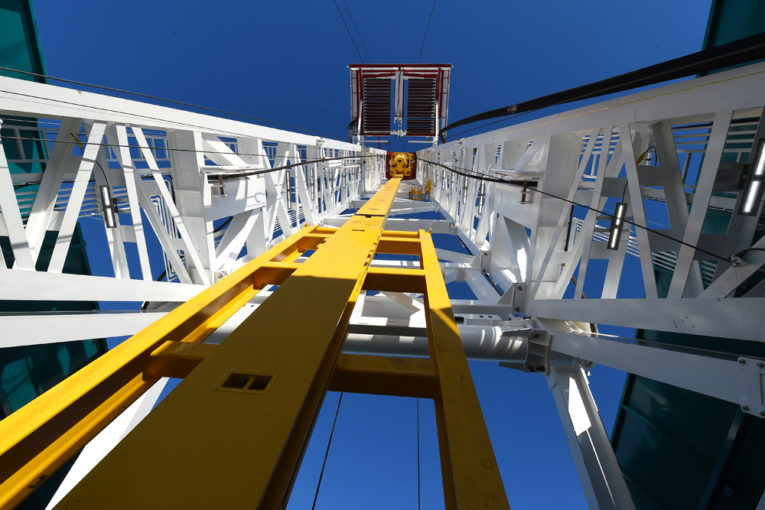
CALGARY — Natural gas has become Alberta’s “forgotten commodity,” quietly suffering through the same steep price discounts that have plagued Alberta’s oil barrels but have not received the same government attention or assistance as their oil counterparts.
“It’s absolutely a similar situation,” Advantage Oil and Gas Ltd. president and CEO Andy Mah said of the congruent challenges facing the province’s natural gas and oil sectors.
But Alberta’s natural gas problems haven’t attracted the same kind of attention as oil “because of the slower decline in natural gas prices,” said Mah, who is focused on the Montney natural gas and liquids formation.
Alberta’s AECO spot natural gas prices traded for $1.89 per gigajoule on Friday, roughly $1.42 less than the benchmark Henry Hub natural gas price in Louisiana. At various times through December, that discount rose to $3 per gigajoule.
AECO gas prices have been heavily discounted relative to the Dawn pricing hub in Ontario, and U.S. benchmarks NYMEX and Henry Hub for years.
“The discounting problem for natural gas is far worse than it is for oil and it’s persisted for longer,” RS Energy director Samir Kayande said, adding, “gas is such a forgotten commodity now.”
Natural gas production in Alberta was previously the main driver of the province’s budget surpluses, but a years-long decline in prices and lack of new export markets for Western Canadian producers has caused the commodity to fall out of favour with investors.
Mah said the steep discounts facing natural gas equate to about $23 million per day in foregone revenues for the Canadian economy, or $9 billion per year. “It’s not as big as oil but it’s still substantial,” he said.
By comparison, when Western Canada Select oil prices suffered record-breaking US$50 per barrel price discounts relative to the West Texas Intermediate benchmark through the fourth quarter of 2018, the Alberta government estimated the cost to the Canadian economy at $80 million per day.
Alberta Premier Rachel Notley also unveiled a series of initiatives — including buying trains to clear a glut of crude in storage in the province and curtailing oil production — to lift oil prices.
Gas producers, including Advantage, expect the province will take more notice of the challenges facing their sector now.
The government commissioned a report that was published in December, by former TransCanada Corp. and Talisman Energy Inc. CEO Hal Kvisle that laid out a series of steps the provincial government could take to fix the situation – from demanding changes to how the province’s gas pipeline networks operate to direct investments in liquefied natural gas export facilities.
One government official told the Financial Post that natural gas “is just as important (as oil), it’s just not getting the same kind of attention as oil” but that could soon change.
The provincial government has yet to announce what steps it will take to help the beleaguered sector, but it announced the formation of a team to look at potential LNG investments in the middle of December.
Alberta’s investment bankers as well as executives in the natural gas industry have long suggested the government invest directly in an LNG project to expand new markets because, in addition to the revenues from the project, the province would benefit from higher gas prices across the basin.
“I think there is a heck of an opportunity here for the government to partner — not even necessarily own — with LNG projects to help these projects get off the ground,” Mah said.
“I think that one of the struggling situations in Western Canada is that to facilitate these big LNG projects really requires the big multinationals with investment-grade balance sheets,” he said. “Even the big, senior producers here don’t have that kind of financing available.”
A consortium led by Royal Dutch Shell Plc announced it would proceed with the $40-billion LNG Canada mega project in B.C. this year, which marks the first LNG project to get the green light in Canada.
Three other LNG projects are inching closer to a final investment decision and could proceed to construction in 2019, including Woodfibre LNG in British Columbia, Goldboro LNG in Nova Scotia and Jordan Cove LNG in Oregon, which would source Canadian gas.
“It’s the LNG side of the equation that needs to solve the problem,” said Cameron Gingrich, director, gas services at Solomon Associates.
Gingrich said the key difference between the discounts oil producers have faced in Alberta and that of natural gas producers is access to pipelines.
For oil producers, massive price discounts are the result of stalled pipeline projects and a slow build in more expensive oil-by-rail movements. For gas producers, sufficient pipeline takeaway capacity exists, but it is priced at a point beyond what companies are willing to pay to move their product.
Gingrich says companies including TransCanada and Enbridge Inc. have struggled to get natural gas producers to sign up for long-term contracts to move their gas on long-range transmission lines in recent years.
The natural gas business is changing and producers are now being forced to directly market their gas to customers rather than just selling it into a pricing hub.
“You can’t have all these producers in the basin continuing to try to grow production. They have to secure markets, they have to go downstream and find markets for their gas,” Gingrich said, adding that means gas producers in Alberta striking direct deals with utility companies elsewhere.
Some of the province’s biggest natural gas producers began striking such deals this year in an effort to diversify away from the AECO benchmark, and Gingrich expects the trend to accelerate in 2019.
• Email: [email protected] | Twitter: geoffreymorgan
You can read more of the news on source
